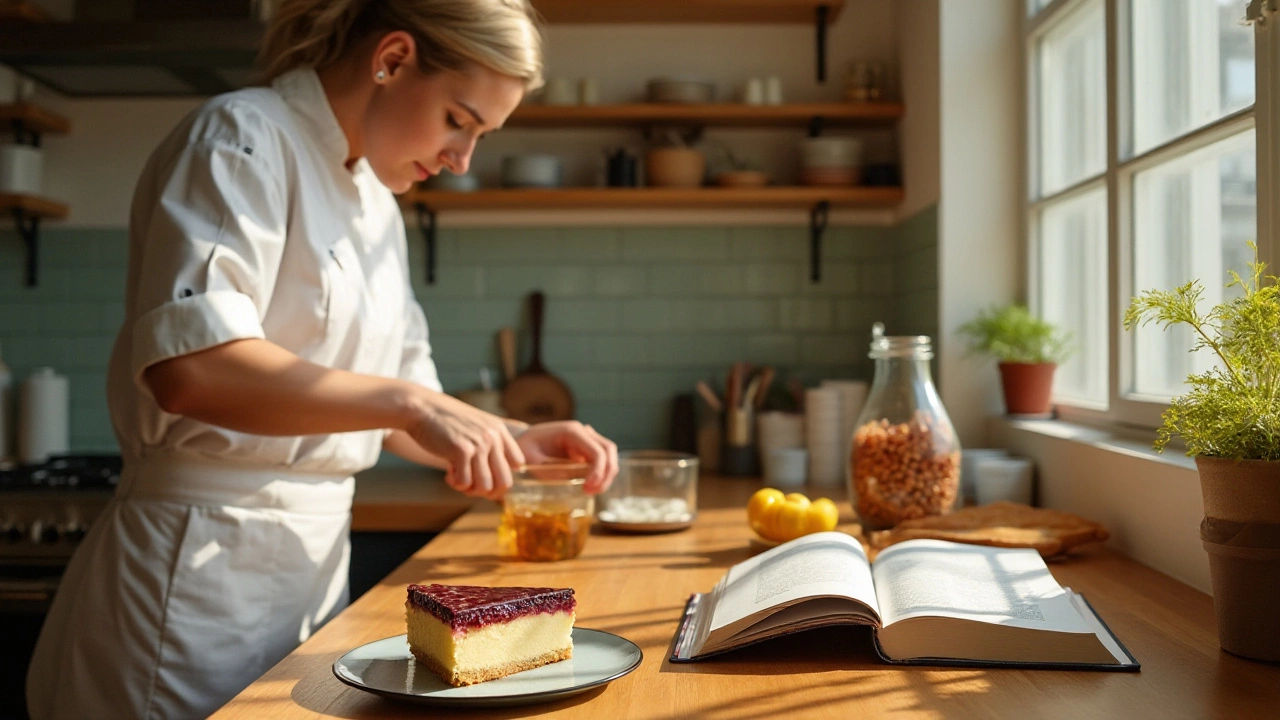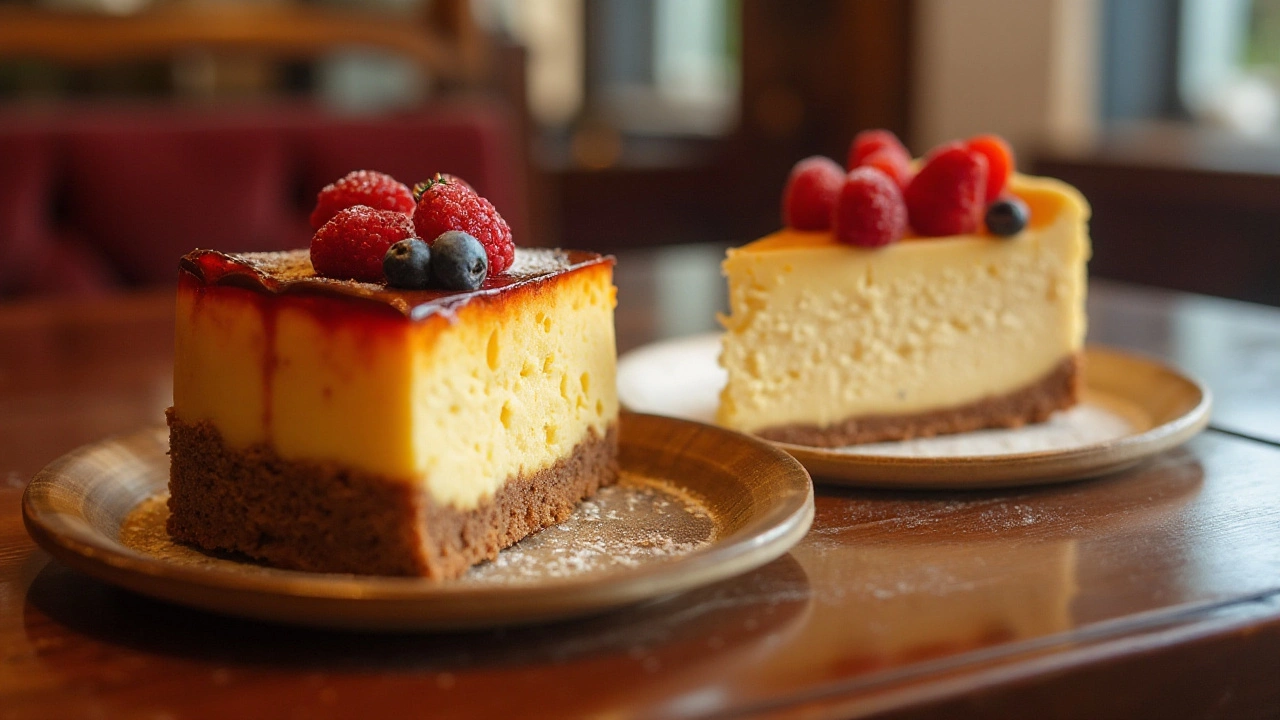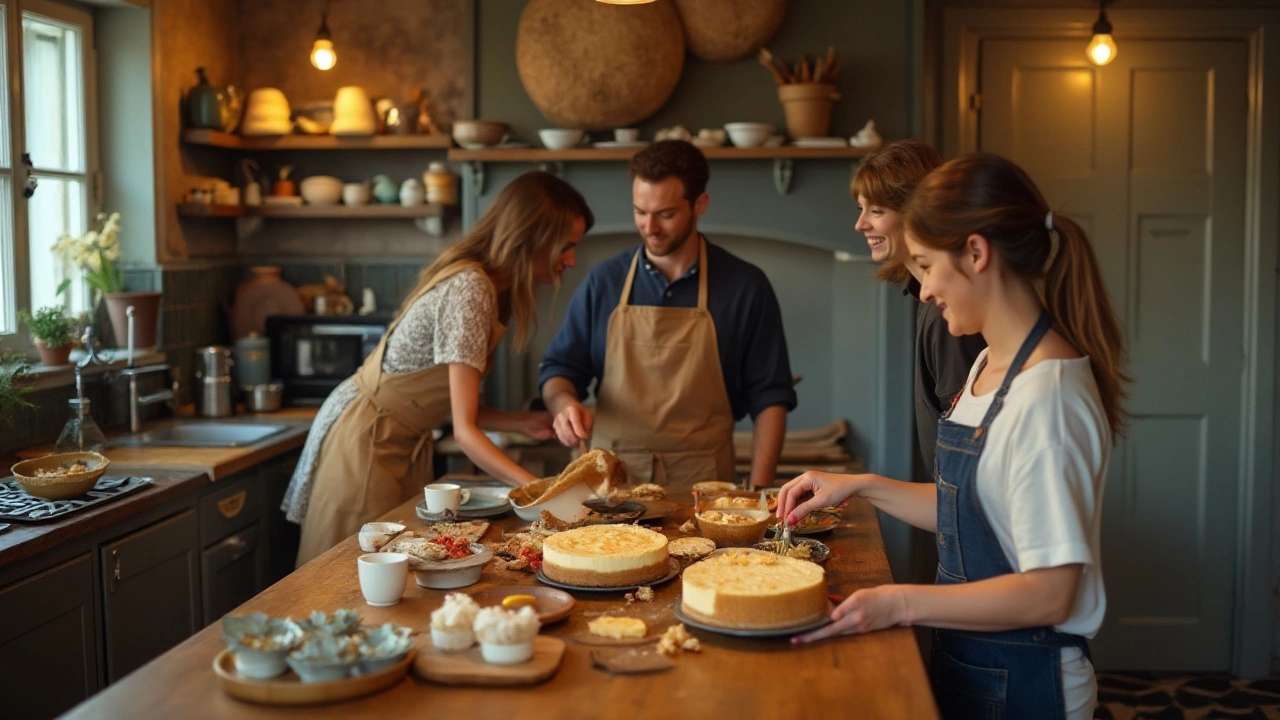
Cheesecake is a beloved dessert that sparks enthusiasm in many forms, but two popular styles often stand at the forefront: New York cheesecake and classic cheesecake. Both decadent and delicious, these variations offer their unique qualities that cater to different palates.
The key to understanding their differences lies in the texture, ingredients, and baking techniques used in each method. New York cheesecake is celebrated for its dense, rich, and creamy consistency, achieved with the generous use of cream cheese, heavy cream, and eggs. In contrast, classic cheesecake leans towards being lighter and softer, often incorporating sour cream or cottage cheese, giving it a distinct tang.
As you explore these varieties, consider adjustments like baking temperature and time, which also play a role in enhancing their unique flavors. Whether you're indulging in New York's richness or enjoying the traditional tastes of classic cheesecake, both styles promise a delightful experience. Let's dive deeper to discover how these mouthwatering cheesecakes can be perfected in your own kitchen!
Texture and Ingredients
When it comes to cheesecake, the difference between New York and classic cheesecake often sparks passionate debates among dessert connoisseurs. A key factor that distinguishes these flavorful treats is their texture and the ingredients used. New York cheesecake is renowned for its dense, creamy, and rich texture. This opulence is achieved through a higher concentration of cream cheese, which is the star of the show. In addition to cream cheese, the inclusion of heavy cream and a larger quantity of eggs contributes to its signature silky consistency. These elements are carefully balanced to ensure that each slice holds its form yet melts in the mouth in an indulgent manner.
On the other hand, classic cheesecake is often lighter and less dense, creating a delightful contrast to its New York counterpart. Traditionally, classic cheesecake recipes might incorporate sour cream or even a blend of cream cheese and ricotta or cottage cheese. This mix results in a cheesecake that is slightly tangy and boasts a softer texture. The balance of flavors is subtle, making classic cheesecake an excellent choice for those who prefer a delicacy that isn't overwhelmingly rich. For those who wish to tweak recipes to their taste, an easy tip is to adjust the proportions of these key ingredients, embracing the fun of experimentation to discover a personal preference.
"Cheesecakes vary greatly, and their personality is a testament to the baker's creativity," remarks celebrated pastry chef Claire Saffitz, reminding us that the nuances in texture and ingredient choice play a significant role in defining this beloved dessert.
In terms of sweeteners, both types usually call for sugar, but some bakers opt for alternatives like honey or maple syrup to introduce a hint of complexity in the flavor profile. The crust also contributes to the textural experience. A New York cheesecake often features a classic graham cracker crust, offering a crunchy contrast to its creamy filling. Meanwhile, traditional variations might explore cookie-based or nut-based crusts, which can add an additional layer of flavor and texture.
For those looking to further explore differences through visual aids, many have found it useful to compare the nutrient and ingredient profiles side by side. Below is an illustrative example comparing core ingredient proportions:
| Ingredient | New York Cheesecake | Classic Cheesecake |
|---|---|---|
| Cream Cheese | 4 cups | 2 cups |
| Heavy Cream | 1 cup | 1/2 cup |
| Sour Cream | N/A | 1 cup |
| Eggs | 5 large | 3 large |
Understanding these ingredients' roles can enhance one's ability to create both versions of cheesecakes with precision. So, whether you prefer the decadent richness of a New York cheesecake or the lighter classic version, the choice of ingredients will guide you to an ideal homemade creation that can rival any bakery.

Baking Techniques
When it comes to crafting the perfect New York cheesecake versus its classic counterpart, the baking techniques employed are crucial in defining their unique textures and flavors. New York cheesecake often begins with a signature graham cracker crust, which is pressed firmly into the bottom of a springform pan. The creamy, rich filling is then poured atop this crust, creating a harmonious balance between the crispness of the base and the dense, velvety top. Baked at higher temperatures, typically around 500 degrees Fahrenheit for the first 10-15 minutes, before gently reducing the heat to around 200 degrees for the remainder of the bake, this method ensures the cheesecake achieves a beautifully browned exterior while maintaining its smooth, luscious interior without cracks.
On the other hand, the classic cheesecake method embraces a slower, gentler approach. The batter in this style frequently includes beaten egg whites or sour cream, resulting in a lighter, fluffier texture. This type often calls for a water bath, or bain-marie, to evenly distribute heat and prevent over-baking, which could lead to browning or cracking associated with a dryer texture. The oven temperature is significantly lower, often around 325 degrees Fahrenheit, and the cheesecake is baked longer to ensure a uniform, silky finish with a pale, unblemished top.
A well-known quote from Julia Child once said,
"The only time to eat diet food is while you’re waiting for the steak to cook."Though not specific to cheesecake, this delightful perspective reminds us of the indulgence that baking can bring. Whether you opt for the rich, distinctive flavor of a classic cheesecake or favor the dense, creamy allure of its New York cousin, the process is as rewarding and enjoyable as the resulting slices savored with each bite.
For the meticulous baker, an important aspect often involves implementing precautionary steps to ensure the desired outcome. When making New York cheesecake, it's essential to let the batter rest and the ingredients reach room temperature to avoid air bubbles forming during the mixing process. Utilizing a water bath for classic cheesecake not only aids in cooking the batter evenly but also introduces moisture to the oven environment, keeping the delicate custard-like filling from drying out. Do not forget the significance of cooling; both styles benefit immensely from allowing the cheesecake to rest in the oven post-baking with the door slightly ajar, helping to acclimate it slowly to room temperature and preventing sudden temperature changes that might cause the top to crack.
To conclude, mastering the art of cheesecake, whether New York or classic, is a dance of the right techniques and a bit of patience. Be it the bold, indulgent burst of a New York slice or the subtle elegance of a classic rendition, each holds its unique space in the culinary world of sweets. With practice and precision, any baking enthusiast can unfold these differences and enjoy crafting both to perfection.

Flavor Profiles
Exploring the flavor profiles of cheesecakes opens up a rich territory of taste sensations that are adored by dessert lovers across the globe. The hallmark of a New York cheesecake is its dense and rich flavor, which often creates a pure and creamy experience in every bite. This opulence is largely due to the substantial amount of cream cheese used, blended meticulously with heavy cream and eggs. The smooth texture is complemented by a subtle tanginess from a touch of lemon juice or zest, cutting through the richness just enough to balance the flavors beautifully.
On the other hand, the classic cheesecake offers a more varied spectrum of tastes. It's typically lighter and sometimes just as creamy, but with a more nuanced flavor. The use of sour cream can sometimes bring a slight tang that is unexpected yet delightful, while some versions incorporate ricotta or cottage cheese for a softer, more delicate taste. This fluffier counterpart usually sees a hint of vanilla or almond extract, contributing to its complex yet subtle sweetness. This difference makes it perfect for people who prefer a less intense dessert experience.
Alice Waters, a renowned American chef and advocate of simple food, once noted, "For me, the perfect classic cheesecake is a revelation in balancing flavors and textures."
Both types of cheesecakes can be wonderfully enhanced with toppings and accompaniments. A crucial part of their flavor profiles involves additions like fruit compotes, chocolate ganache, or caramel drizzle. Each topping brings out characteristics in the cheesecake’s base flavors. For instance, a berry compote might amplify the creamy tanginess of a New York cheesecake, while a dollop of whipped cream on a classic cheesecake can round out its vanilla notes.
| Cheese Variants Used | Flavor Intensity |
|---|---|
| New York Cheesecake | Strong, Rich, Creamy |
| Classic Cheesecake | Mild, Fluffy, Subtle |
Whether you're indulging in a New York cheesecake or savoring a classic cheesecake, each delivers a unique and satisfying experience. The secret to choosing lies in your personal taste preference and the occasion. Enjoy discovering these delicious distinctions in your cheesecake baking adventures. Both styles have their own ways of turning a day into a special occasion with their delightful presence on any dessert table.

Serving and Pairing Ideas
When it comes to serving New York cheesecake and classic cheesecake, presentation plays a significant role in enhancing the eating experience. For a New York-style cheesecake, consider serving it as a chilled, indulgent slice with the signature dense and creamy texture taking center stage. Its richness pairs exceptionally well with a dollop of freshly whipped cream or a drizzle of raspberry sauce, which provides a tart contrast to its sweetness. A few fresh berries on the side can also add a splash of color and a burst of freshness that complements the cake's depth.
On the other hand, a classic cheesecake, known for its lighter consistency, can be a canvas for creativity due to its versatile nature. Toppings such as lemon curd or fruit coulis can enhance its refreshing qualities. A unique serving twist could be incorporating a classic cheesecake into a trifecta dessert with layers of graham cracker crumble and sliced fruits. This method not only elevates its appeal but also navigates different textures together in a single bite.
"Cheesecakes are a perfect combination of sweet, creamy, and tangy flavors, and their versatility makes them the ultimate delight for dessert lovers," said dessert connoisseur Joanne Bergamin.
Pairing these cheesecakes with the right beverages can create a harmonious dining experience. A rich New York cheesecake can be well-suited with a glass of full-bodied red wine or a classic espresso, as their bold flavors stand up well to the dessert's creaminess. Alternatively, a cup of aromatic tea can pair beautifully with a classic cheesecake. Varieties like Earl Grey or jasmine have subtle notes that can complement the cake's simple elegance without overpowering it.
To round out your understanding of these pairing possibilities, consider the occasion and audience when adding finishing touches to your cheesecake endeavor. Whether you're hosting a dinner party or planning a quiet evening dessert at home, knowing which accompaniments enhance each cheesecake style is key. Reflect on your personal preferences and those of your guests; the possibilities are as limitless as the creativity you bring to the table.
| Cheesecake Type | Recommended Pairings |
|---|---|
| New York Cheesecake | Red wine, espresso, fresh berries |
| Classic Cheesecake | Tea, lemon curd, fruit coulis |